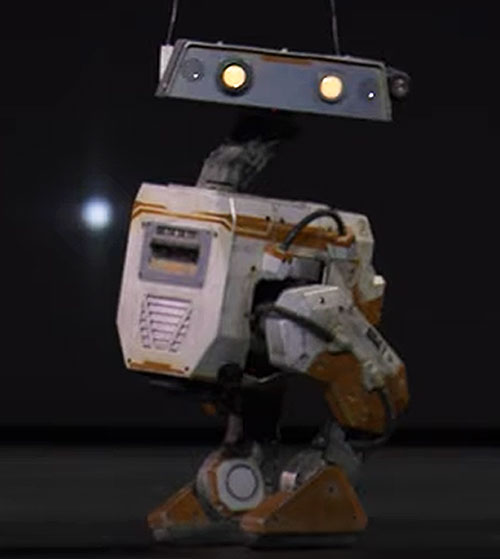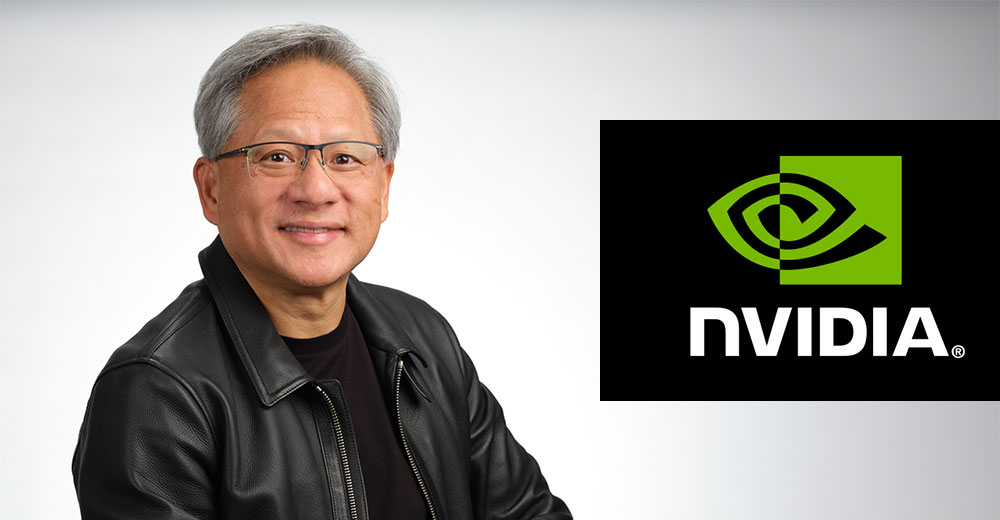Last week was Nvidia’s GTC, which I think should be renamed since we connect the “G” in GTC to GPU, and this event was mainly about AI. If you are interested in AI, you should watch the keynote from the event. It was fricken amazing! The Disney robots stole the show! I was there, and even though the venue sucked, I still place it as one of the most amazing events I’ve ever experienced in line with the Windows 95 launch. Other CEOs should use this keynote as the new standard for how these things should be done.
After the event, we spent time with Nvidia CEO Jensen Huang. One of the things he repeated was that the decisions he made to make Nvidia’s leadership in AI happen were insane.
Had he been an executive at any other company, he’d have likely been fired long before this effort was successful because, until generative AI took off, one thing that any other company’s CEO would have said was that Huang was nuts. He wasn’t, and now Nvidia is the world’s third most valuable tech company and challenging for number one.
We’ll close with my Product of the Week. You can’t buy it yet, but you’ll be able to experience it at Disneyland and Disney World. I’m talking about Disney BDX robots. I’m glad we can’t buy one, as I’d be in line right now waiting to get mine.
The Definition of Insanity Is Wrong
This has bugged me for a while. We typically define insanity as “doing the same thing over and over and expecting different results.” That isn’t insanity so much as it is considered stupidity. If you see someone doing something that hurts them and then doing it again, you don’t call them insane. You call them stupid. When you repeat a mistake you’ve made or observed, you didn’t learn the lesson. If learning is smart, not learning is stupid, not insane.
If conventional knowledge says that flying faster than the speed of sound will kill you, then flying faster than the speed of sound is insane. If people believe the world is flat, trying to circumnavigate it would be insane. If everyone believes that going to the moon is impossible, spending millions to do it is insane.
So, you could argue that everyone from Christopher Columbus to Nikola Tesla was insane (well, Tesla more than most), though I’d argue that those who drive the biggest change in our world are all insane — but in a good way. They don’t agree that what they are doing is impossible and execute to a level that when they are done, what we think of as impossible has changed.
What Nvidia’s CEO Jensen Huang has done with the Blackwell GPU and Hopper CPU is pure insanity and incredibly brilliant, placing Nvidia at the point of the AI spear.
The God Mode GPU
One of my favorite movies on Hulu is called “Boss Mode”. But if you’re a gamer, it likely should have been called God Mode. This is when you adjust the game settings so that you cannot lose, and it is a fun way to get through the story quickly without a lot of the skill, puzzle, or sequence learning that otherwise would be required.
With Blackwell and Hopper, Nvidia has created the God Mode GPU solution. Just looking at what is already a big GPU is misleading because what truly makes this a God Mode GPU is that you will eventually be able to network a theoretically unlimited number of these things together, creating GPUs of unlimited size and capability.
The eight years it took to develop this solution resulted in a potential 1,000 times increase in performance. This achievement challenges Moore’s law benchmark, which has defined the tech industry to date, equating to a 100-fold increase every decade.
Granted, right now, there are limits tied to the copper being used for much of the networking, but Nvidia is working to eliminate these limits with more advanced technology, suggesting it won’t be long until these limits are pushed. To make this work, every GPU is connected all the time to every other GPU, resulting in thousands of cables with a total length measuring miles in one rack.
It is interesting to note that supercomputers may not be that much faster, but they’ll use a fraction of the power to accomplish the same results in the same amount of time. The example provided was a prior system with 8K GPUs that would take 90 days and use 15 megawatts of power for a large project. A new system based on Blackwell would require 2K GPUs for the same 90 days and use only 4 megawatts. More would be faster but require more power (no free lunch here).
As Huang would typically say, the more you buy, the more you save, and potentially, the faster you can get things done.
Apple, Dell, Microsoft, Siemens
Four Nvidia partners were called out as leading their peers. Interestingly, the only client device shown throughout Huang’s keynote was not a PC from other vendors. It was Apple’s Vision Pro, arguing that it has the potential to be the new Apple II, foreshadowing the coming wave of true AI PCs, not the AI PCs we’ve been told to expect.
This perspective makes a certain amount of sense in that the PC is based on the world as it existed in the 1970s when Xerox PARC conceived it and thought it was stupid. Then Apple built it successfully, and then Microsoft/IBM/Intel took it and made it even more successful (which is both sad and funny).
Jensen referred to the new interface as the “Human Interface,” and I expect it will eventually replace the GUI, much like PCs replaced terminals, with the Apple Vision Pro being the current bar. Interestingly, while Steve Jobs was willing to correctly sacrifice the iPod to create the even more successful iPhone, Tim Cook isn’t Steve Jobs. He hasn’t yet made a similar decision, so it’s possible that Apple may miss this opportunity even though it has the chance to own it.
Even though I think Lenovo has a better AI solution, it wasn’t at the event. However, Michael Dell was, so it was Dell that got called out by Huang as having the best solution even though Michael Dell never made it to the stage. I’d suggest you look at both the Dell and Lenovo solutions and make up your own mind. But I think Dell won this round. That’s interesting because, typically, Lenovo outplays Dell at events like this.
When talking about cloud providers, Microsoft stood above the rest in its rapid embrace of Blackwell, working on a full duplicate of Nvidia’s implementation. Microsoft’s run to implement AI has been impressive, catching everyone by surprise. Recently, Microsoft hired executive staff from Inflection to run the AI effort, a move that emulated prior strategies with Xbox and the Cloud. I remain impressed with Microsoft’s execution here.
AWS and Google are playing too, but AWS is limited by its retail nature (it just doesn’t push envelopes like this), and Alphabet (Google) still can’t seem to focus, so it’s lagging behind Microsoft’s efforts. Given who and what AWS is, this is fine, but Alphabet needs more focused and dynamic leadership because it should have beaten Microsoft but was left in the dust instead.
Siemens got a lot of coverage for applied AI. I used to work for Siemens, and it’s impressive on large-scale projects and showcases the path that stumbling companies like Boeing should emulate to dig out of their poor-quality mess (any flight that lands with most of the parts still on the plane is a good one). Siemens is an example of how to use AI to build critical projects better, faster, with high quality, and cheaper, making it an excellent example of how most firms should implement AI, placing the company as the clear AI leader in its powerful class.
Computing vs. Generating
One of the things we will need to wrap our minds around is the difference between computing and generating.
Current computers do what we direct them to do, whether that be word processing, spreadsheets, or graphics. With AI, computers generate outcomes based on commands. Instead of having to write a document, the computer does that when you tell it what you want. If you want to analyze something, you tell the computer to analyze it; you don’t populate a spreadsheet. If you want a drawing, describe it and have the computer improve it.
The user skill set is quite different. Office skills aren’t useful with AI, nor are skills with Acrobat. Even programming skills aren’t useful any more than knowing how to use a mechanical typewriter or calculator, which was useful after PCs became a thing. What is useful is command of the language and the ability to express your needs with complete, detailed concepts that the AI can then follow to create what you intend.
Interestingly, building up AI skills may also help us become better communicators. But the people who will do best in this new world are those who are naturally better at communicating, not those who learn specific applications.
Wrapping Up: Where AI Should Be Initially Focused
I remain concerned that we are initially focusing AI on the wrong people, like the folks toward the bottom of a company or organization, rather than those at the top. What I mean is that if anyone in the rank and file of a company makes a mistake, it’s generally survivable, but if a CEO makes the same level of mistake, it can kill a company. In the military, the commander can lose the war while the soldier may lose their life. So, the most significant positive impact of AI assistance exists at the top, not the bottom, yet that is not where we are focused.
The other area is a concept Toyota produced years ago regarding autonomous driving called Guardian Angel. In a car, this technology prevents you from doing something stupid like driving too fast, running a stop light, or otherwise needlessly putting your life and the lives of your passengers at risk (it seems like every week I read a story about an impaired or distracted driver killing a family as a result of stupidity).
Guardian Angel could be applied to life. If more of us had AIs that could help us make better decisions, we’d all be more affluent, less injured, have better relationships, and lead far happier and less unfortunately dramatic lives.
Back to insanity. Ultimately, what Jensen Huang attempted with this new AI push would have been considered insane at any tech company I’ve ever worked for or with. He’d have been fired, demoted, forced out, lambasted, criticized, and, depending on his approach, even locked up for misuse of company resources. But the result will and is changing the world. We need to change the world to enable people with vision to do what may seem insane to create what earlier generations might have called magic.
Huang and Nvidia have created a God Mode GPU. The word “magic” is inadequate to describe it. We need more CEOs like Jensen Huang.

Disney BDX Robots
One of my favorite products was the Sony Aibo. It was and still is an amazing robot. However, it shouldn’t have existed, given that it was extremely expensive for its time and wasn’t Sony’s most profitable offering.
I was at the Aibo launch, and I recall there were two separate launch efforts, one for Japan and one for the rest of the world. Demand was so high for the first launch the thousands of robot dogs slated for Japan sold out in minutes. It took weeks for the international portal to open, not because demand was lower, but because it was so high Sony couldn’t keep the servers up long enough to complete transactions. It was the first unintended denial of service attack by buyers.
Later versions of the Aibo were far more capable, but this first version, which would have cost around twice the Apple Vision Pro’s price in today’s dollars, became like a pet to many people. When the little robots failed or stopped working, it was like their actual pet died. This was even a plot line in some legal-based TV shows.
Well, the Disney robots (part of Project Groot) created with Nvidia’s Jetson robotic technology are like having little robotic kids.

Disney BDX robot at Nvidia GTC 2024 (Photo by Author)
Designed around the characters created in Star Wars, they walk on two legs, respond to spoken language (generative AI LLM models), have their own R2D2-like language, and can convey emotions.
These robots don’t need to be fed, they don’t poop, and they could (with repairs) last for years, though they could also fall out of warranty. But for those who can’t have living pets, don’t want to deal with the death of a pet, or just want low-maintenance companionship, this class of robots could be ideal.
While I expect these robots are wicked expensive right now, that cost will come down dramatically over time. I anticipate that, eventually, Disney will sell increasingly capable variants of its Disney robots.
I fell in love when these robots walked on stage, so the Disney BDX robots are my Product of the Week.























































